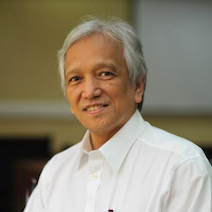

Recently, I was invited by friends from the National Cancer Center Hospital in Beijing to attend the 15th OESO (a French acronym) World Conference on Esophageal Diseases. It was out of curiosity that I accepted. Here was a European-based organization holding its first meeting in Asia on a largely Chinese disease with around 8,000 delegates in attendance. In Texas, everything is big, but in China, things are a whole lot bigger.
It used to be that when the word esophagus was mentioned, the reaction would be "eso-what?" Now, Barrett's esophagus has become a familiar term thanks to media reportage. (READ: LIST: 'Migraine every day' and Duterte's other ailments)
The esophagus is a tubular muscular structure meandering near the heart, the aorta (the biggest blood vessel in the body) and the trachea or main airway. In short, it is located in the center of the chest. Its function is to propel food and water from the mouth to the stomach, making possible the simple and underrated joy of swallowing.
Behind such a singular task is a bewildering array of sophisticated genetic and molecular studies by a small army of PhDs who are studying cancer and other diseases of the esophagus.
I was first introduced to the esophagus as an important structure during my surgical residency at the Philippine General Hospital many, many years ago, when I attended the lecture delivered by the legendary Hong Kong surgeon GB Ong before a rapt audience. He talked about a large number of patients who underwent radical surgery for cancer of the esophagus. It seemed that the last important structure in the depths of the chest was finally conquered by the scalpel.
In contrast, the Philippines has corrosive injuries from swallowing alkali cleaning agents in botched suicidal attempts. The alkali burns the esophagus, sometimes perforating it, resulting in oftentimes fatal infections. Survivors suffer a lifelong misery of repeated operations, often unable to eat and drool saliva, which is bothersome. When an entity is swallowed – foreign bodies, mostly dentures accidentally ingested during sleep or drunken binges – this sometimes results, again, in esophageal perforation. (READ: 'Growth' found in Duterte's endoscopy? Doctors explain what it means)
China has more than half of the world's esophageal cancer cases brought about by genetic and other factors like spicy food, hot tea, and viruses. An American thoracic surgeon told me that she performed around a hundred esophagectomies (or removal of the diseased esophagus) a year; in China, surgeons were reporting hundreds or even thousands of cases annually.
In the history of cancer surgery, the pendulum has swung from extremely radical surgery to less radical then back again to radical surgery. Paradigm shifts may still occur depending on clinical trials on large numbers of patients. Scientists and doctors demand data – “Show me the data" – because data is power.
Randomized controlled trials or RCTs or comparing similar groups subjected to different treatments hold sway. It may look cold and heartless but the science of medicine does not deal with emotions. In the end, optimal treatment depends on which data give the best results.
Surgery of the esophagus is technically challenging. It is not without risk, and that is an understatement. In the past, 3 very large incapacitating incisions on the neck, chest, and abdomen were used to remove the diseased esophagus and replace it with the stomach or large intestine to provide continuity for the passage of food, restoring swallowing. Now, these have been replaced by small incisions measuring 3 centimeters or so, the so-called minimally invasive esophagectomy (MIE) or keyhole surgery. (READ: Duterte explains gum chewing habit)
Once I had the opportunity to watch a few keyhole operations by Chinese thoracic surgeons. It was technical artistry averaging two-and-a-half hours (these would normally take around 6 to 8 hours to perform). Later, I asked one of the surgeons why he performed a near-perfect operation in such a short time. His reply: "Because I do the operation every day." Practice makes perfect.
The Galapagos syndrome is a Japanese term referring to the isolated development of a product (the 3G phone) which had advanced features but was unsuitable for use in the rest of the world. (The Galapagos is a group of islands in the Pacific Ocean off the coast of Ecuador where Charles Darwin noted changes of flora and fauna evolving independently from the mainland.) Referring to the esophagus, the Galapagos syndrome as I understood it may imply that advanced research on the treatment of cancer of the esophagus in China may not find widespread application elsewhere. – Rappler.com
Dr. Jose Luis J. Dañguilan is a thoracic and vascular surgeon. He organized the Esophagus Center at the Lung Center of the Philippines, serving as its first program director. He was also former executive director of the hospital.

















